Category Archives: Minor Leagues
Arizona Fall League – Pictures
A couple days ago, I posted several videos I shot at the Arizona Fall League games I attended last week. Today, you get still pictures. I wish I had had an opportunity to get more pictures of Jones, Adam and Rogers, but I only saw Jones pitch once and chose to shoot a video rather than try to get pictures through the netting, Adam didn’t pitch at all in the games I saw and Rogers, of course, is injured and did not pitch.

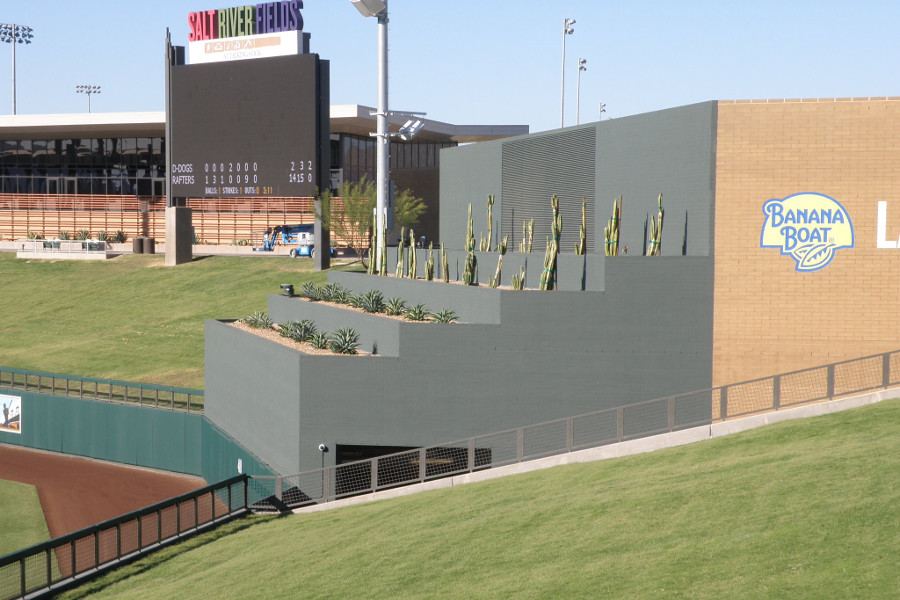
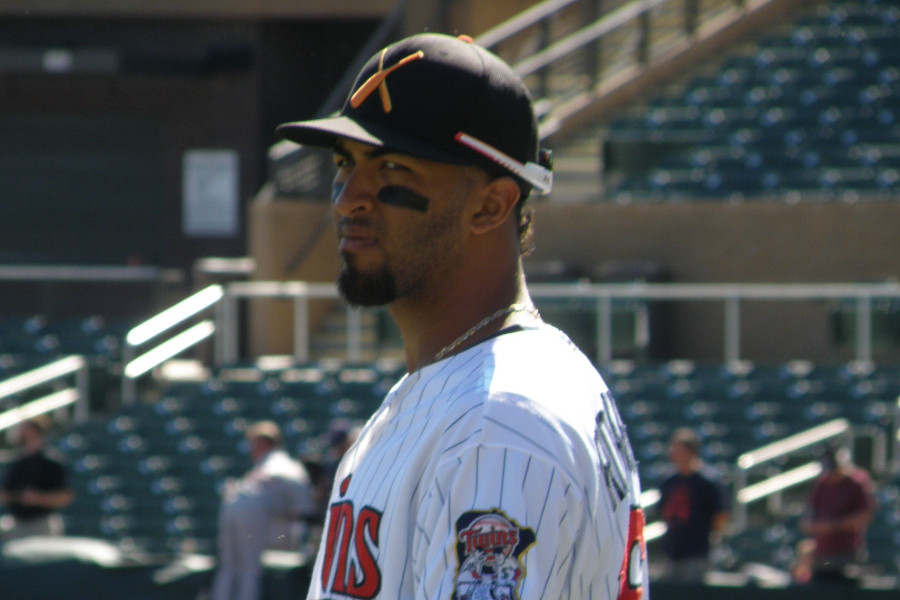
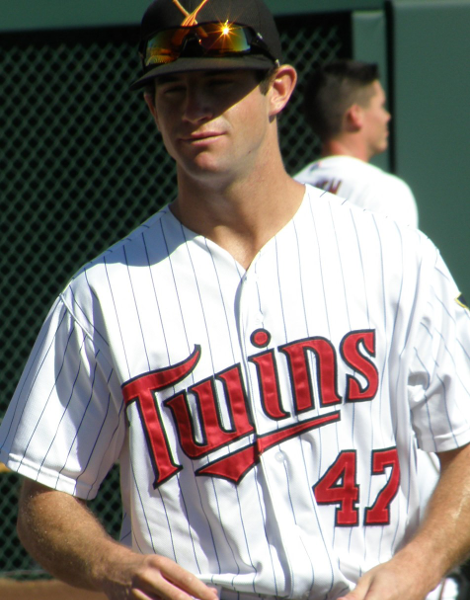
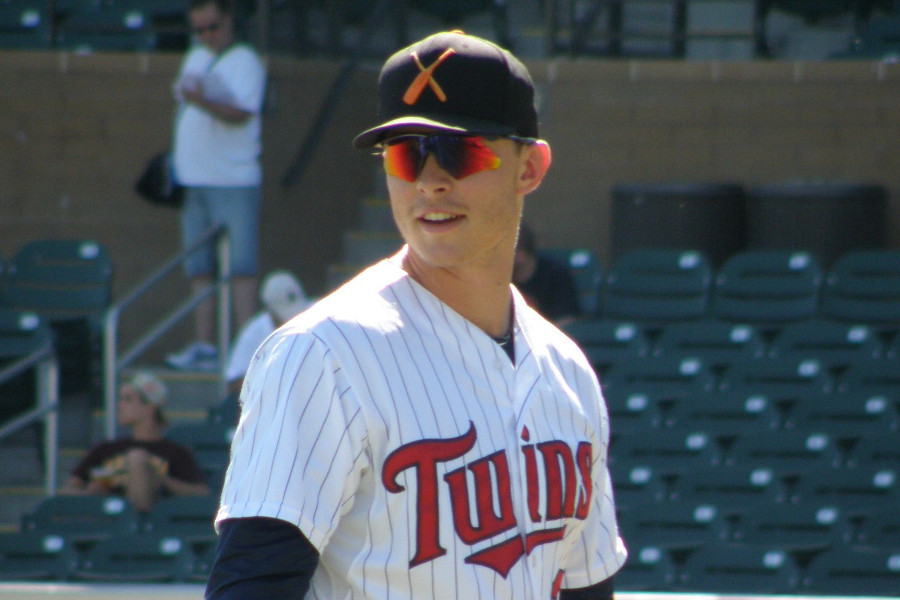
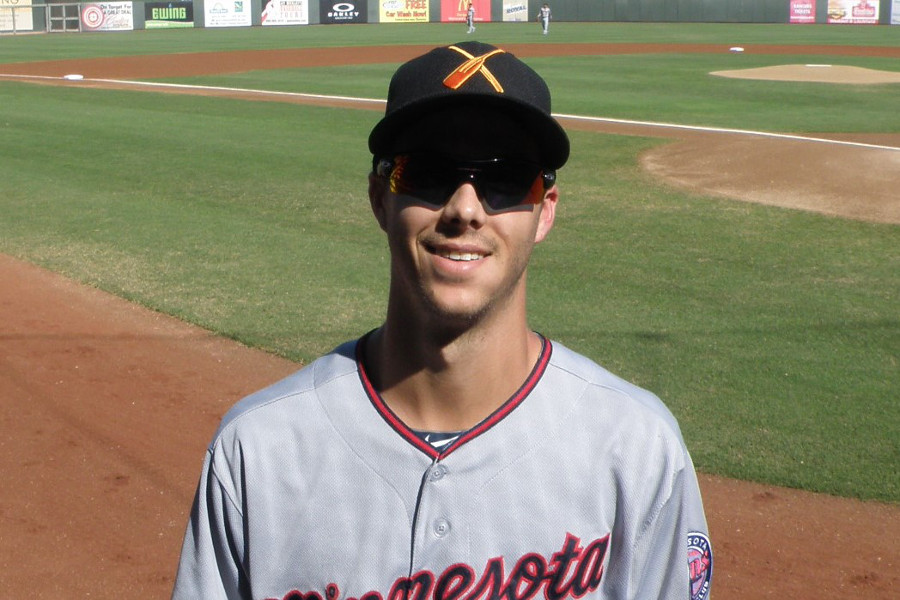
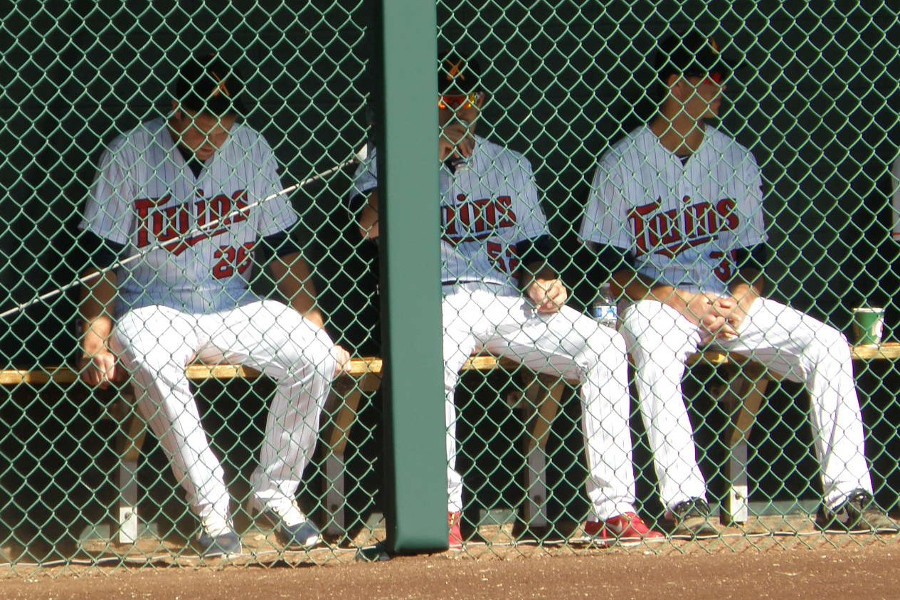
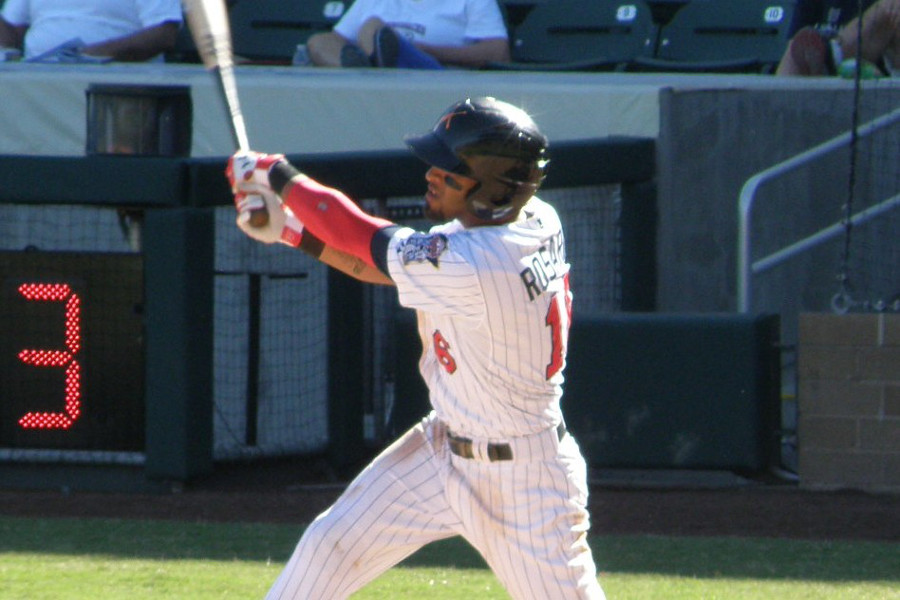
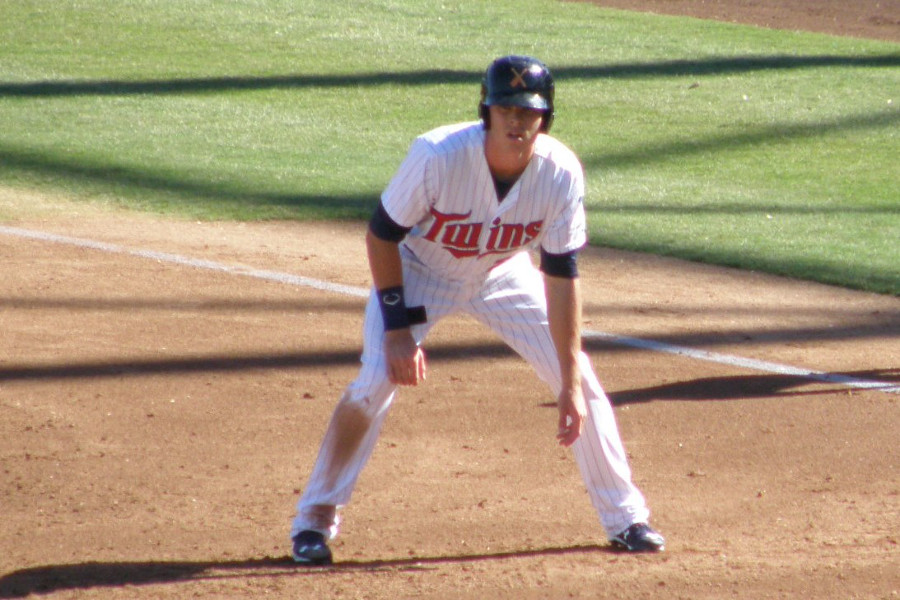
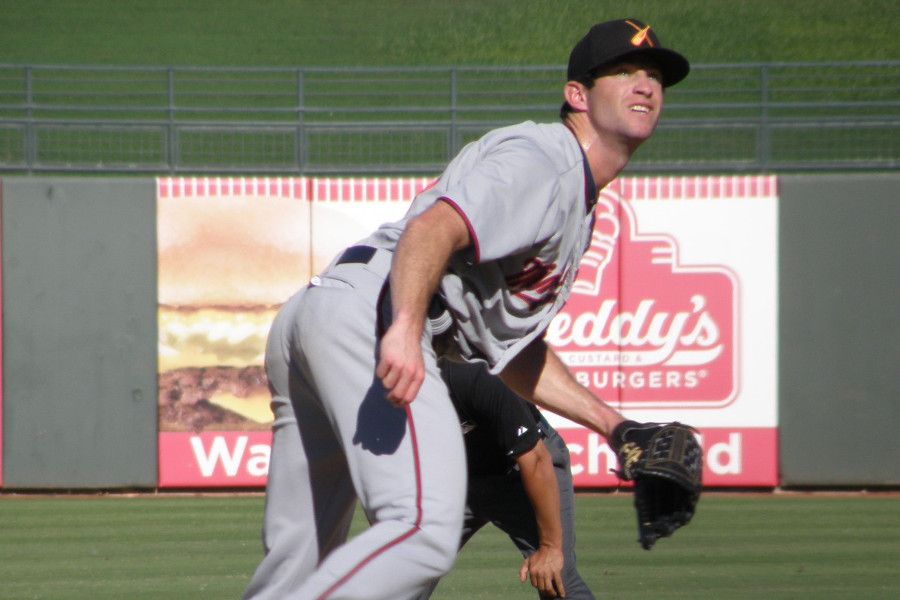
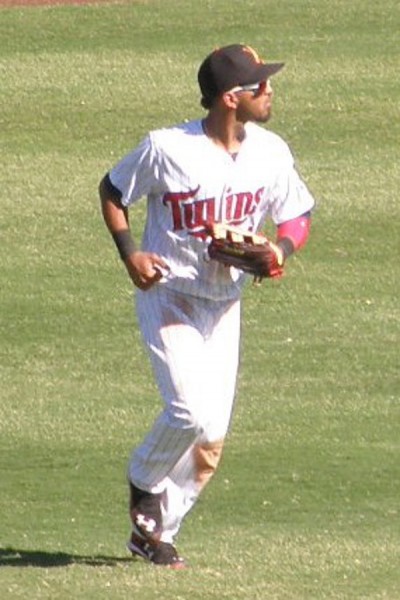
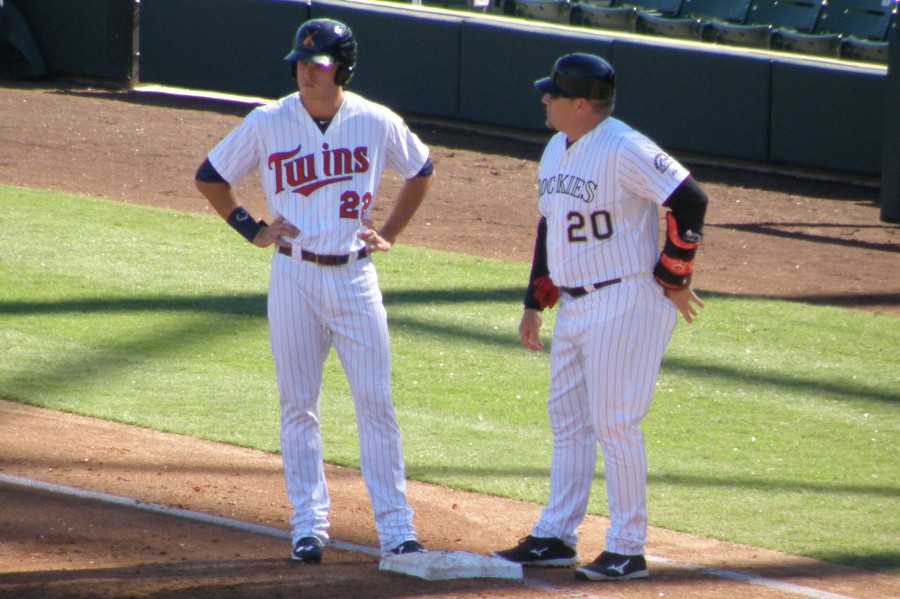
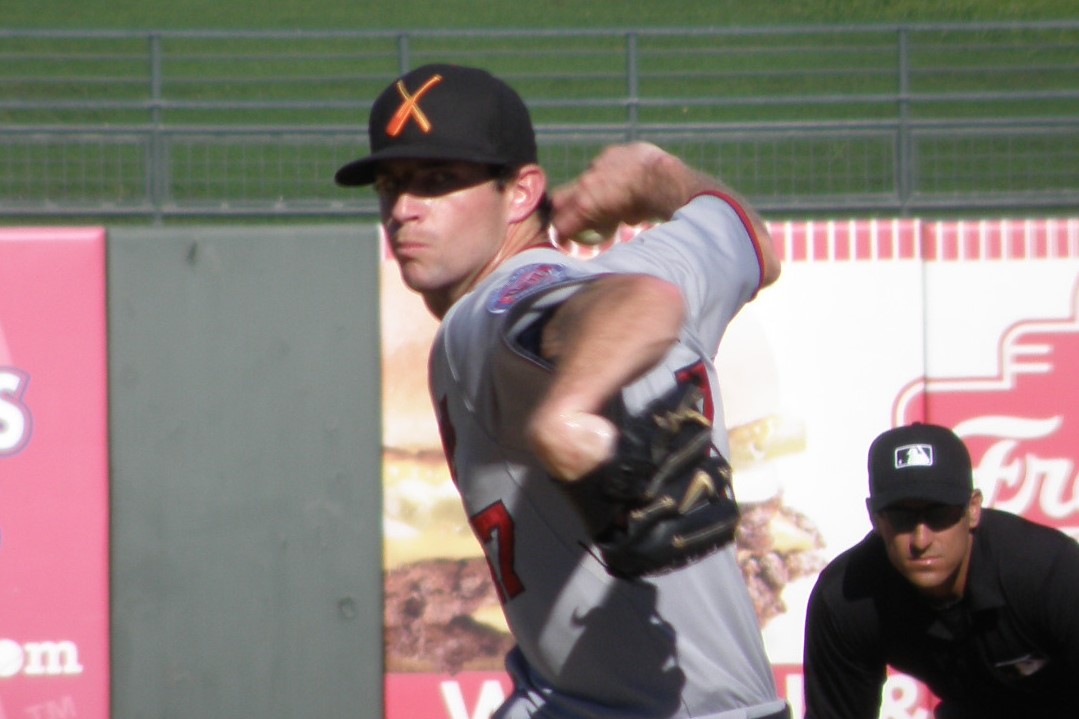

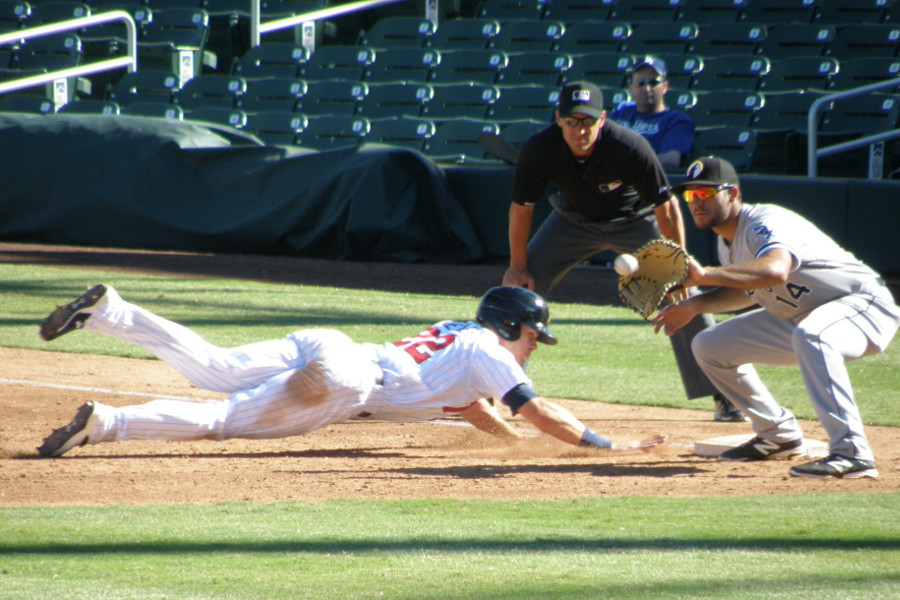
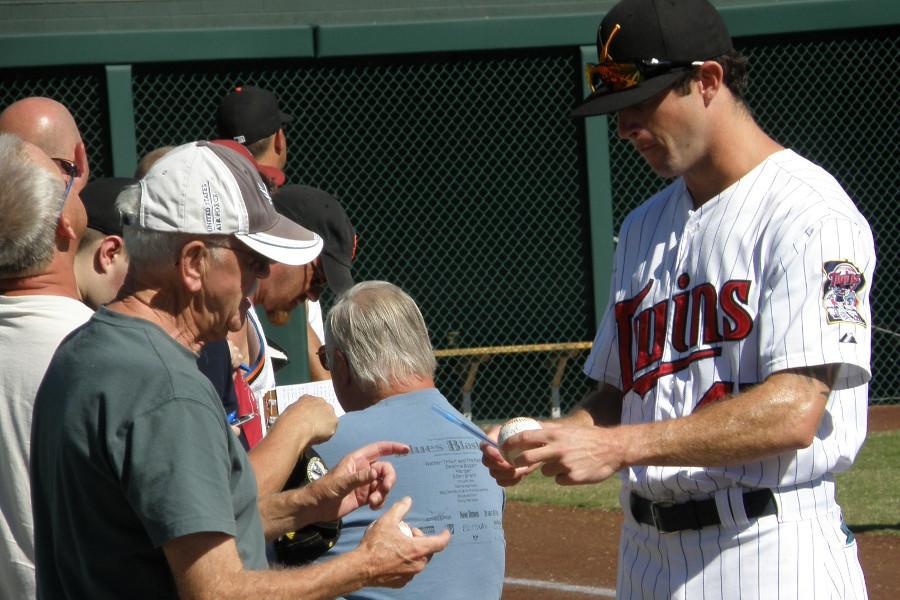
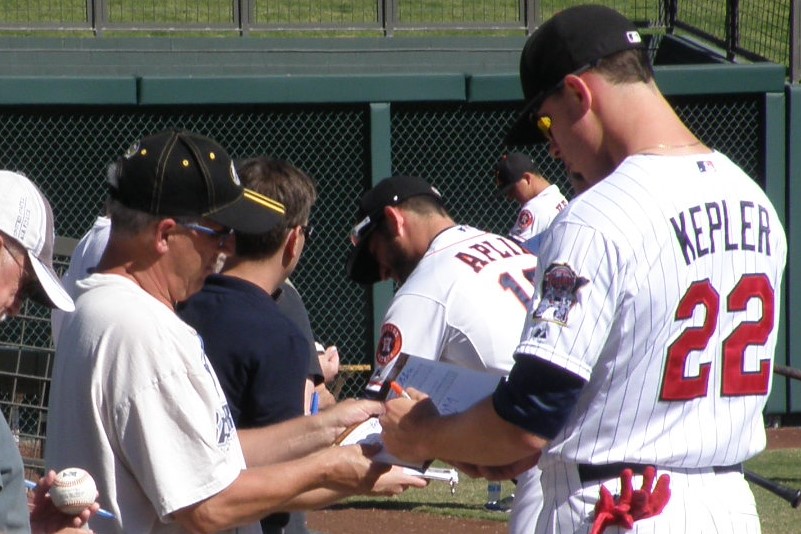
Arizona Fall League – Videos
I took a lot of pictures and shot several videos during my trip to Arizona to catch a few AFL games last week, so I figured I would put up a post to share some of them. I’ll split things up a little bit and start with the videos in this post.
I saw Eddie Rosario, Max Kepler, Jake Reed and Zach Jones in game action during the three games I saw in Arizona.
Enjoy
AFL Interviews: Max Kepler and Taylor Rogers
The Salt River Rafters made the trip across to the west side of the Phoenix area to Surprise, Arizona, on Wednesday to take on the Surprise Saguaros and, prior to the game, Twins prospects Max Kepler and Tyler Rogers took the time to answer a few questions.
Kepler takes a .289/.385/.422 slash line in to Thursday night’s game in Salt River, which is respectable for any hitter in the Arizona Fall League, but is perhaps even more impressive for a 21-year-old with no experience above the Class A level.
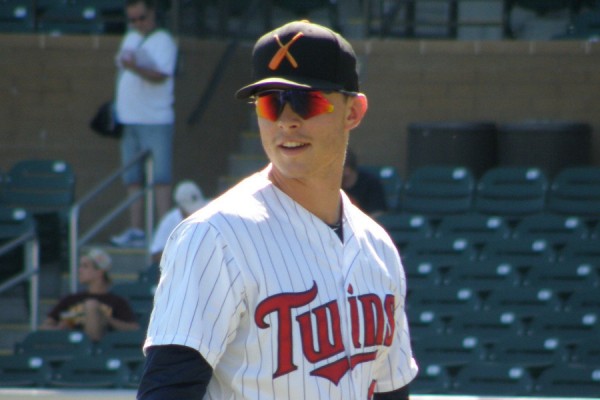
He’s happy with his performance, so far.
“I think I’m playing consistent ball,” Kepler said. “I’m playing solid outfield defense. Yeah, doing everything I can right now.”
Players in this league have been playing ball since minor league spring training started at the beginning of March, and Kepler confirmed that the wear and tear on the body starts to catch up with them this time of year.
“Yeah, it has (been a long year),” Kepler admitted, but he quickly added, “It’s been an awesome year, though.”
This is Kepler’s second year in the Arizona Fall League and he said he’s definitely seeing a difference in his game this time around.
“I’m more confident. I feel more confident against the pitchers,” Kepler reflected. “Last year, coming out of low-A ball, I just felt like all these big names were throwing at me and I was just a little guy in the big ocean. (They were) big dudes. Now I just feel like I can handle it.”
Kepler has been part of two minor league championship teams in his past three years of minor league ball, winning titles with Elizabethton in 2012 and in Fort Myers this past season.
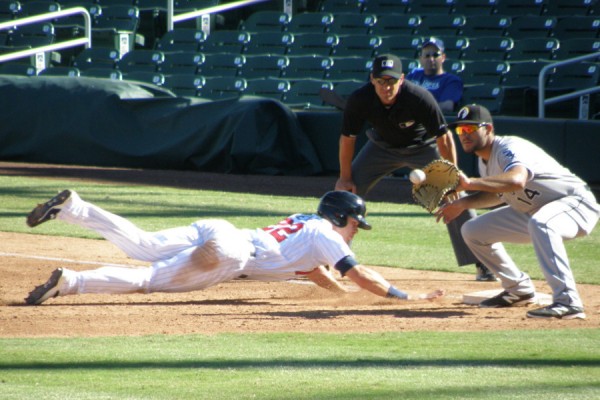
In between those championship seasons, Kepler spent 2013 split between rehabbing an elbow injury during the first half of the season and spending the second half of the year with the Cedar Rapids Kernels.
He had some good moments with Cedar Rapids, including an opposite field home run in his first home game as a Kernel, that stands out in Kepler’s memory (“I remember that short porch really helped me out that first game”), but his thoughts on that season are admittedly mixed.
“The fans are unbelievable (in Cedar Rapids),” Kepler said. But at the same time, recalling his efforts to overcome the injury, he added, “It was rough, but I’m glad I got to stick with that good group of guys and I hope we can move up together because we’ve got chemistry on that team.”
That “good group of guys” that Kepler played with in Cedar Rapids formed the core of this year’s Florida State League championship team. That team was managed by Doug Mientkiewicz, the former Twins first baseman who has been prominently mentioned as a finalist for the Twins’ managerial job this fall.
The speculation has been that, should Mientkiewicz not get the Twins job, he may move up to manage the Class AA team that will be playing their first season in Chattanooga, Tennessee.
“That would be awesome,” said Kepler, of the possibility of playing a second year for Mientkiewicz.
Kepler also provided some insight in to what it’s like to play for Mientkiewicz.
“He’s wild,” Kepler said, while laughing. “I’d say he’s a little unorthodox, but it sure worked for us. We kind of went through a lot of ups and downs this year, but when we won, we won a bunch. And then when we lost one game, Doug would get on us, and I mean hard. But when he did, he fixed it and it worked for us. But, yeah, he sure was tough on us when we weren’t doing well and weren’t focused, but the rest of the year, he was a fun guy to be around. He was just like one of us. Yeah, I loved him.”
Once the AFL season wraps up, Kepler will take a little time off then begin getting ready for 2015.
“The offseasons are getting shorter and shorter,” he said. “But I’ll do as much as I can with my three months of workout.
“I’ll travel the states for a little, go to Texas for Thanksgiving,” Kepler said of his immediate plans after AFL finishes. “I’ll be going home (to Germany) for Christmas and the holidays.”
While Kepler has been playing several days each week in Arizona, pitcher Taylor Rogers has been not much more than a spectator during the games.
Rogers, a 23-year-old lefty who pitched at Class AA New Britain in 2014, was injured in the third inning of his first AFL game when a batted ball was lined off his shoulder.
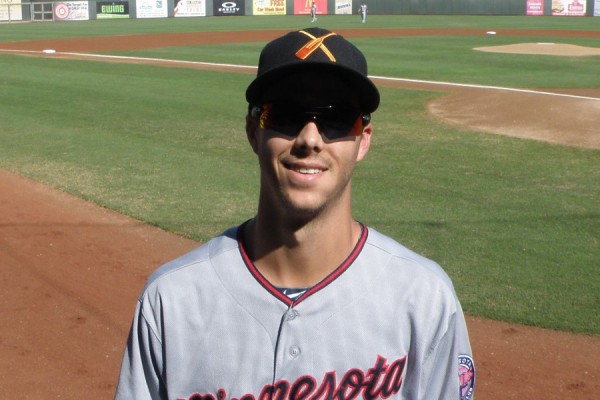
Since then, he’s been sitting.
Taylor said Wednesday that he’s hoping that’s about to change.
Rogers said that he is, “finally getting back to square one almost – back to where I can toss a little bit. Hopefully I can get a few more innings in here before the season ends.
“It’s something I want to do. You sign the contract to play here so I want to finish this thing out and see what I can do. We’ll probably going to see how these bullpens go.”
Rogers, along with Kepler, Byron Buxton and Jake Reed, is a Cedar Rapids Kernels alum.
Though, unlike the others, Rogers’ time in Cedar Rapids barely was long enough to register on his minor league stats line. He struggled a bit during his three games for the Kernels in a very cold April of 2013 before being promoted to Fort Myers, where he had a very good season for the Miracle.
“Yeah, you know what, funny what warm weather can do for you,” Rogers said, with a smile, then added, “No, it was fun those 14 days or so. It was nice to get out of the cold, but I’m sure if I would have stayed in Cedar Rapids, it would have been a fun year.”
The weather in Cedar Rapids may have been chilly, but Rogers recalls the warm greeting he and his team mates got upon arrival.
“I thought it was really cool how that was the first year of the Twins being there (as an affiliate). What I remember was the fans really welcoming us. That was just really nice to see. Something like that you don’t see very often. They were excited to have us there and we felt very welcomed.”
AFL Interview: Jake Reed
A year ago, Jake Reed was beginning intrasquad workouts in Eugene, Oregon, as he prepared for his junior year at the University of Oregon. In the subsequent 12 months, the Twins’ prospect has seen a lot of the U.S.A. while pitching for the Ducks, then the Twins Rookie level team in Elizabethton, Tennessee, followed by the Cedar Rapids Kernels, and a trip to Fort Myers for instructional league. Now, he’s a member of the Salt River Rafters in the Arizona Fall League.
Reed was the Twins’ fifth round draft pick back in June, which means you won’t find him on any of last offseason’s “Top Twins Prospects” lists. You won’t likely have to look too far down this year’s lists to find his name, however.
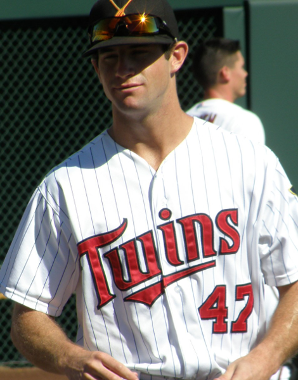
After signing with the Twins, he made four appearances in Elizabethton before being promoted to Cedar Rapids. Between the two stops, he put up a 0.29 ERA over 20 relief appearances. He struck out 39 batters, while walking just three.
That kind of work earned him a coveted spot in the Arizona Fall League where, as difficult as it may be to believe, he’s actually improved his ERA to a perfect 0.00 in his first six appearances for the Rafters.
As you might expect, Reed is pretty happy with how his professional career has gone, thus far.
“It’s been just a great experience,” Reed said on Tuesday, before the Rafters beat up the Glendale Desert Dogs 14-2. “Just from the time I got drafted, with my parents there in Eugene with me, to sitting here now in Arizona. To still be playing in the fall, it’s pretty special. It’s been a great ride. I couldn’t have wished for a better first half-season.”
Reed was one of two Twins prospects, along with outfielder and top Twins prospect, Byron Buxton, who were named to represent their team in the AFL’s “Fall Stars Game” this Saturday. Not bad for a guy who was surprised when Kernels manager Jake Mauer and pitching coach Ivan Arteaga gave him the news that he was headed to Arizona this fall.
“When {Mauer) called me in, there was a couple weeks left in the season. I knew the Miracle were going to be in the playoffs, so I thought I was maybe going to be going up there to help them,” Reed recalled. “But they sat me down and originally Ivan kind of played a joke on me and asked if I wanted to go play (winter ball) for him in Venezuela. I was like, ‘oh yeah, make four grand a month,’ and I said, ‘absolutely.’ He said, ‘No we were just kidding. We’re sending you to fall league.'”
Most AFL players have at least reached Class AA, but organizations are allowed a very limited number of roster spots for players who have not reached beyond Class A ball. That says something about how the Twins view Reed.
Mauer and Arteaga told Reed that the Twins minor league director, Brad Steil, had contacted them and asked whether they thought Reed was ready for AFL, where he’d be facing a number of the top prospects in baseball.
“They thought I was,” said Reed. “They asked me if I wanted to and obviously I wasn’t going to turn that down.
“It was a big surprise for me. I was pretty shocked. I’m not saying I don’t think I deserved it, but with the guys that come out here normally, it’s the bigger prospects and it’s my first half season, so in that aspect, I didn’t expect it much.”
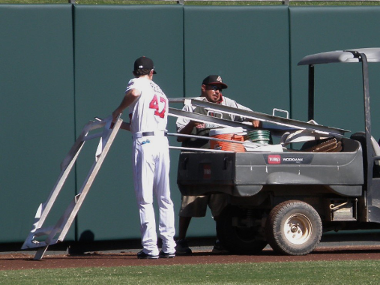
Often, organizations are cautious about sending pitchers to Arizona the year they were drafted due to the number of innings they’ve racked up on their arms, between their final college season in the spring and their first partial season of professional ball in the summer. That wasn’t an issue for Reed, however.
“I’d started my first two years of college so I was accustomed to going 100 innings a year and I threw 40 maybe in college and 30 in the summer, so I was only at 70. I had more in my tank. The inning limit hasn’t been an issue at all.”
It’s not like they overtax the arms in Arizona, anyway. Each club carries about 20 pitchers to make sure none of them are overworked. Even relievers, like Reed, typically will pitch an inning or two and then get a couple days off before their next appearance.
Fall League is an opportunity for Reed to show what he’s got in front of a large group of scouts from literally every organization in professional baseball, but it’s also a chance to hone his craft. Reed was told the Twins wanted him to work on his change up, on “tightening up” his breaking ball and on stopping the running game.
Of course, his 0.75 WHIP means he’s not getting many opportunities to work on controlling that running game this fall.
“I haven’t thrown a change up much,” Reed admitted, “but my breaking ball, at times, has been a lot better than it has been. I think the biggest thing, though, is just maintaining the command that I had all summer. Getting ahead of guys, not walking guys.
“As long as I keep throwing strikes, I think I’ll keep doing alright.”
While Reed and half a dozen other Twins farmhands have been toiling in the Arizona sun, Twins General Manager Terry Ryan has been looking for a new manager. Reed and the others are following that story closely, as you can imagine.
“Absolutely,” Reed confirmed. “Ultimately, that’s where we want to end up and ultimately, we want that to be our manager. Right now it seems kind of far-fetched, but hopefully, that’s the guy we’re going to be playing for eventually.
“Yeah, we all follow everybody on Twitter, so we all see what’s going on. We keep up with it. All the Twins are next to one another in the locker room. Whenever we see a new Tweet about another guy, we’re always talking about it. But you know what, we trust Terry (Ryan), we trust everybody else in our organization to get somebody that will turn this thing around for us. We hope to be a big part of that, especially the young guys in our organization.”
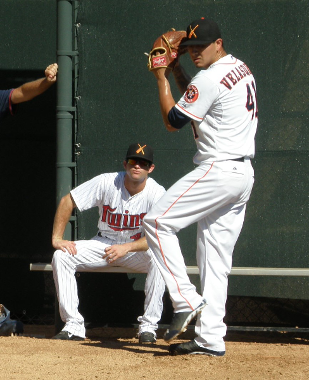
Reed and the others are getting a little taste of what it’s like to be treated like a big leaguer during their time in Arizona. Games are played at Major League spring training facilities and Salt River plays their games at the complex shared by the Diamondbacks and Rockies. The Rafters use the D’Backs’ big league clubhouse.
It didn’t take Reed long after arriving to figure out he was no longer at the Twins’ minor league facility in Fort Myers, where he had been working during his time in the postseason instructional league.
“The facilities in Ft. Myers are great, don’t get me wrong, but going from a big locker room with hundreds of lockers to the big league locker room at a big league facility, it honestly kind of took my breath away,” Reed said. “There’s twelve TVs in there, I mean everything you can imagine in a locker room. Unbelievable. Then obviously, getting to play here every day, it doesn’t get old, for sure.”
Reed had a chance earlier in the summer to get another glimpse of what it means to be a Major Leaguer. Joe Mauer and Rick Nolasco had concurrent rehabilitation assignments in Cedar Rapids and that experience stands out in Reed’s mind as a highlight of his time with the Kernels.
“When Joe and Ricky came, that was pretty special. Joe Mauer is such a great guy, and Ricky is, too, but just having him in the locker room was pretty special. Just seeing him go about his work and how he respected the game when he was playing and how he talked to other guys on the other team when they’d ask him questions. Just a great guy.
“On his way out, before he left, he went around the locker room and shook everybody’s hand. So that was unbelievable to me, a guy of that stature being able to take the time to shake every single person’s hand in the locker room was pretty special.”
The Twins are already showing signs that they may be rebuilding their big league bullpen in 2015. Reed’s performance at all levels this year has him in position to be fast-tracked by the organization if he can keep performing.
Reed’s success has even altered his own expectations of himself heading toward 2015.
“It’s definitely different now than it was when I signed and playing in Cedar Rapids,” he acknowledged. “I don’t know what’s out of the picture for next year, because I haven’t had the chance to talk to Terry or anybody else in the organization. They want to see guys excel in the minor leagues and prove that they’re ready for the big leagues, but I’m not sure. I’m sure I’ll have a better idea here pretty soon. We’ll see what happens. We’ll see where I go for spring training. There’s just a lot up in the air.”
Reed has not heard, yet, whether he’ll be getting an invitation to the Twins’ big league spring training camp.
“No, that’s the thing, too. I think I’ll have a better idea here pretty soon, because it’s kind of important when you want to get your body ready for a certain time, you want to be in shape for a certain time. So hopefully I find out soon.”
Reed started to say he would not be disappointed if he doesn’t get the invitation to the big league camp in February, but then smiled and corrected himself.
“I will be disappointed,” he admitted, “but I’ll understand. Ultimately, it’s not up to me, I just need to keep pitching well and hopefully it works out in my favor.”
But that’s a matter for another day. Right now, Reed has a couple more weeks of pitching in the Arizona heat and then a well-deserved break.
“I’ve literally been pitching for over a year straight,” Reed said, alluding to having started his workouts at Oregon a year ago. “I’m starting to kind of feel it now. A break off of throwing would be nice.”
Pitchers and catchers report to Fort Myers by mid February, so it may not be a very long break for Jake Reed.
Arizona Fall League Videos
I’m in Arizona this week catching a few Arizona Fall League games. This afternoon, I shot a couple of videos of Twins prospects Eddie Rosario and Max Kepler.
First, we have Eddie Rosario beating out a swinging bunt, followed by an RBI double.
Ignore the umpire calling Rosario out at second base. The call was overturned on appeal to video.
Here’s Max Kepler beating the Desert Dogs pitcher to 1B to reach on an E3. Kepler had a stand up triple later in the game but I was not shooting video at the time. There’s a picture after the video of his triple swing anyway.
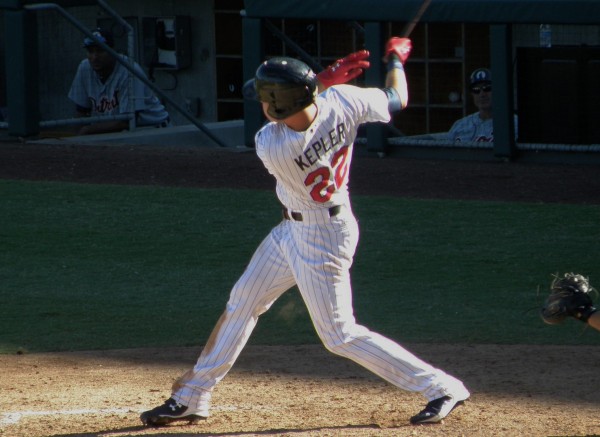
Couple of other things.
Salt River won the game 14-2, yet the game was completed in less than three hours. We may not like to admit it, but the speed-of-play rules may be working.
– JC
Twins Organizational Meeting To-Do’s: Players
This is Part 2 of 2, concerning the work to be done this week by the Minnesota Twins staff at their “organizational meetings” in Fort Myers this week.
Reports have estimated that as many as 100 members of the Twins staff may participate in the meetings this week. That’s a lot of people, but then it’s a big job.
In Part 1, we covered the manager and coaching staffing issues. In Part 2, we look at roster matters at the Major League and minor league levels.
As indicated in Part 1, over the coming days, weeks and months, the Twins need to
- Hire a new manager for the first time in over a decade.
- Work with said new manager to assemble a seven-person big league level coaching staff.
- Assign manager and coaching duties to every level of minor league affiliate.
- Determine which, if any, of their minor league free agents to attempt to retain.
- Determine at which minor league level to place a significant number of their top young prospects to start 2015.
- Determine whether to offer arbitration to a few members of their current big league roster.
- Identify potential MLB level free agents and/or trade targets to pursue once the World Series is completed.
 Some of the items on that to-do list are not common tasks for this organization, but even for some of those that are on the list every postseason, the stakes this year have risen significantly.
Some of the items on that to-do list are not common tasks for this organization, but even for some of those that are on the list every postseason, the stakes this year have risen significantly.
Concurrently with their efforts to identify and put in place big league and farm system managers and coaches, the Twins also have some work to do on the player front.
Filling out the roster(s)
When the subject of filling out the 2015 roster comes up among most Twins fans, the discussion generally focuses on which of the current Twins will/should be back with the club and who potential acquisitions might be that Terry Ryan should seek in the free agent and/or trade market.
Granted, those are important considerations.
But, given that 2015 is looking more like a bridge to the next era of competitive baseball at Target Field than it is a destination itself, the make-up of the organization’s minor league rosters may be equally important to that of the big league roster, if not more so.
For the past couple of years, as the farm system has been being restocked, even the most optimistic fans of the organization have conceded that most of the Twins’ most promising prospects have been in the low minors, multiple years away from being of any help to the parent club.
Sure, it was fun to watch Byron Buxton put on a show for the Fox Sports North audience in 2013 when the cable network televised one of Buxton’s Cedar Rapids Kernels games. But while the distance between Cedar Rapids and Target Field can be traversed in less than five hours, the time it takes for a prospect to progress from the Class A Kernels to the Twins is much longer – frustratingly so, in some cases.
The 2012 Elizabethton Twins won the Appalachian League championship. In 2013, many of those same players made up a Cedar Rapids Kernels playoff team that went 88-50. This past season, largely the same crop of prospects contributed to Fort Myers’ Florida State League championship team.
In 2015, that group should largely fill out the roster for the first season of the Twins’ new AA affiliation with the Chattanooga Lookouts.
No problem, right? Move them up there. Challenge them. A player who masters Class AA is generally considered a candidate to skip AAA and move up to the Big Club if a need for someone at his position presents itself and that player is deemed to be a more promising solution than whoever fills that position in Rochester.
The thing is, you don’t have to stretch your imagination far to find 30 or more players who, arguably, should be starting their season at AA. That’s a problem when you’re only allowed 25 players on the Lookouts’ roster.
Jeremy Nygaard maintains an excellent database at Twins Daily that includes a variety of important information concerning every player in the Twins organization. For example, did you know that the Twins also have 23 minor leaguers in their system eligible for free agency this offseason – or that 21 of them are already at Class AA or higher?
They also have a similar number of players eligible to be selected by another organization in the Rule 5 draft if they aren’t added to the Twins’ 40-man MLB roster by December.
Granted, few of those potential free agents would be viewed as potential lynchpins on future Twins teams and even fewer of the Rule 5 eligibles are likely to be lost in that draft, but with the promising class set to move up to Chattanooga, the front office does have its work cut out for it this week when they sit down to fill out preliminary rosters for their AAA and AA clubs.
Finally, there’s the minor little project to assemble a Major League roster.
And, by “Major League roster,” I mean a roster of players who have either demonstrated that they possess a talent level worthy of being on a Major League roster or, at least, have shown potential to be elite big leaguers in the not-so-distant future.
Of course, this topic can (and certainly will) warrant entire articles devoted to it all on its own. For purposes of brevity here, suffice to say that the Twins need to identify big league talent to fill the following positions:
- A starting pitcher worthy of being a #1 or #2 starter for a competitive big league team.
- Multiple bullpen spots.
- A Major League center fielder.
- A Major League left fielder.
- Any other position that may open up due to trades.
That’s a pretty substantial shopping list. Some of these needs may be filled from within the organization, some via trade and some via free agency. What they all have in common is that, at the end of 2014, the Twins did not have an incumbent that you would definitively declare to be a legitimate everyday Major League talent.
When you consider all the work to be accomplished this week – paring down the manager options, looking at coaching candidates for both big league and minor league positions, and assembling rosters at multiple organizational levels, not the least of which is for the Twins team itself, I’m not sure 100 people in Fort Myers is going to be enough.
Of course, I have some vacation time coming if Terry Ryan would like me to come down and offer some ideas. I’m just a phone call, email or Tweet away.
– JC
Twins Organizational Meeting To-Do’s: Management
The Minnesota Twins are holding their annual “organizational meetings” in Fort Myers this week. As newsworthy baseball stories go, that bit of information ranks quite a bit below the MLB postseason games and their seemingly nightly extra-inning games and walk-off finishes.
What exactly are the organizational meetings? Well, in Hollywood’s version of Moneyball, you may remember seeing Brad Pitt as Oakland General Manager Billy Beane gathering a few guys around a table in a room and tossing out names of players they might want to pursue acquiring for the following season. That may have fit screenwriter Aaron Sorkin’s needs, but it doesn’t come close to meeting the needs of a real life professional baseball organization.
 Reports have estimated that as many as 100 members of the Twins staff may participate in the meetings this week. That may seem like a lot of people, but the Twins have a lot of work to do.
Reports have estimated that as many as 100 members of the Twins staff may participate in the meetings this week. That may seem like a lot of people, but the Twins have a lot of work to do.
The Twins hold these meetings every October, but this year’s gathering could be the most critical such gathering in years.
Over the coming days, weeks and months, the Twins need to
- Hire a new manager for the first time in over a decade.
- Work with said new manager to assemble a seven-person big league level coaching staff.
- Assign manager and coaching duties to every level of minor league affiliate.
- Determine which, if any, of their minor league free agents to attempt to retain.
- Determine at which minor league level to place a significant number of their top young prospects to start 2015.
- Determine whether to offer arbitration to a few members of their current big league roster.
- Identify potential MLB level free agents and/or trade targets to pursue once the World Series is completed.
Some of the items on that to-do list are not common tasks for this organization, but even for some of those that are on the list every postseason, the stakes this year have risen significantly.
First order of business: Identify and hire a new manager
When it comes to deciding who should manage the Twins in 2015 and beyond, a seeming significant majority of fans agreed on one thing – it shouldn’t be Ron Gardenhire. OK, that group (which included me) got their wish. Gardenhire will not manage the Twins going forward.
There is far less of a consensus concerning who SHOULD manage the Twins and, obviously, that’s a far more important question than simply coming to an agreement on who should not.
A fair number of fans seem to feel that anyone the Twins could pick would be better than Gardy. I beg to differ.
Say what you will about the man who managed the Twins for the past 13 years, every year there were MLB managers who were worse at their job than was Ron Gardenhire. Some of those managers were newly hired by their organization. Some were getting their first opportunity to manage at the big league level.
Of all of the confirmed candidates, both internal and external to the Twins organization, that have been identified by the media, exactly one of them would not be making his MLB managing debut on Opening Day 2015 if he is hired by the Twins.
The Twins have had just two managers since Ronald Reagan second term as the US President wrapped up. That can lead fans to feel a certain level of complacency, as if it’s unlikely or even impossible for the Twins to make a bad hire. But they can and they have. Ray Miller, who preceded Tom Kelly in the job, managed just 239 games for the Twins before being axed.
As was the case when Miller was hired back in 1985, the Twins are widely viewed as being on the cusp of a new era of competitiveness, with a number of highly touted young prospects nearing completion of their minor league apprenticeships. Making a bad hire could dangerously impede the club’s reemergence in to relevancy in the American League Central Division.
I agree with Terry Ryan. It’s not important if the new manager comes from within the organization or from the outside; whether he has prior experience or not; whether he is multi-lingual or struggles just to speak coherent English.
What matters is that the choice is the right choice. Unfortunately, there’s no way to know with certainty whether that’s the case immediately (though I think we can pretty much be certain that a significant – and vocal – segment of the fan base will think it is not the right choice, regardless of the final decision).
Assembling a big league coaching staff
While not as highly visible as their selection of a manager, the final make-up of the Twins’ MLB coaching staff is arguably as important. The manager has to run the clubhouse and make out the line-up card and deal with the media and be the public face of the team. But it’s his coaching staff that will spend far more time working with directly with the next generation of Twins players.
When you look at the names of the players likely to wear Twins uniforms for the next several years, it’s not hard to project that as many as one-third of them in any given year will be Latin American natives. Some of them speak passable English. Many do not. It’s easy to say, “they should be learning English,” and – over time – they will. But even above the obvious need for coaches who can communicate with these players in their own language, it’s equally important to have coaches familiar with the culture from which those players have come.
I hope the next Twins manager is more open to using advanced metrics in his game-day decisions (or at the very least, is far less openly dismissive of the idea). But let’s be honest, no manager has the time to pour over all of the information that’s going to be available to him and determine which is helpful how to apply it every day.
That makes it just as critical to have coaches who have experience doing exactly that and, where they don’t have such experience, they have minds open to learning and applying new things.
Finally, Tom Brunansky certainly appears to have done a good job as hitting coach and if the Twins don’t move quickly to retain him, I think they risk losing him to another organization. I would hate to see that happen.
Minor league assignments
For the past few years, the Twins have pretty much nibbled at the edges when it comes to making adjustments to their staff of minor league managers and coaches. They’ve moved a couple guys around every year, but largely there has been a fair amount of consistency at every level, from non-complex rookie ball at Elizabethton through AAA in Rochester.
That’s normal when you have stability among the big league staff and, given the highly acclaimed status of the Twins minor league organization, you would perhaps like to see such stability continue.
But when there are eight spots at the big league level open, it’s hard to imagine we won’t see some of those openings filled from within the current minor league managing/coaching ranks.
Ray Smith has been managing at rookie level Elizabethton for 13 consecutive years (21 years overall) and is likely to continue there, but it would not be hard to imagine Gene Glynn (AAA), Jeff Smith (AA), Doug Mientkiewicz (hi-A) or Jake Mauer (A) in the Twins dugout next season. Two of them, Glynn and Mientkiewicz, have interviewed for the manager vacancy, an indication of how highly the Twins think of both men, while Smith and Mauer have each been managing in the Twins organization for longer than Glynn and Mientkiewicz, combined.
If the Twins hire a manager from outside the organization, that manager is likely to bring in a few additional outsiders with him. If the Twins hire from inside the organization, one might hope that they similarly insist that the new manager include some outside blood among his staff.
But in any event, given the Twins’ history of rewarding loyalty, it is almost impossible to imagine a Twins big league coaching staff without the presence of some number of coaches from within. That may well include one or more current minor league manager or coach, especially considering that they all will be familiar faces and voices to most of the Twins prospects due to arrive in the big leagues over the next couple of years.
By and large, most of the field managers and coaches in the minor league organization look to advance up the organizational ladder, just like the players do. When there are wholesale coaching changes made at the big league level, it would be at least mildly surprising if there were not similar adjustments to the minor league assignments.
Just as is the case with players, some of the staff may move up, some may look at the new landscape and decide their paths to the big leagues might be more open in another organization and, unfortunately, some will not be retained by the Twins, as minor league hitting coordinator Bill Springman and Fort Myers pitching coach Gary Lucas have already found out.
Some fans have become so disgruntled with the Twins’ lack of success at the big league level that they will be satisfied with nothing less than a clean sweep of every manager and coach in the Twins’ system.
That’s not going to happen, nor should it.
The Twins may indeed have become too insular and every organization benefits from adding quality people from the outside. Organizations also benefit from identifying and promoting quality people from within.
The Twins are in a unique situation this offseason in that they have room in the organization to do both.
– JC
Kernels Alums Closing in on FSL Title
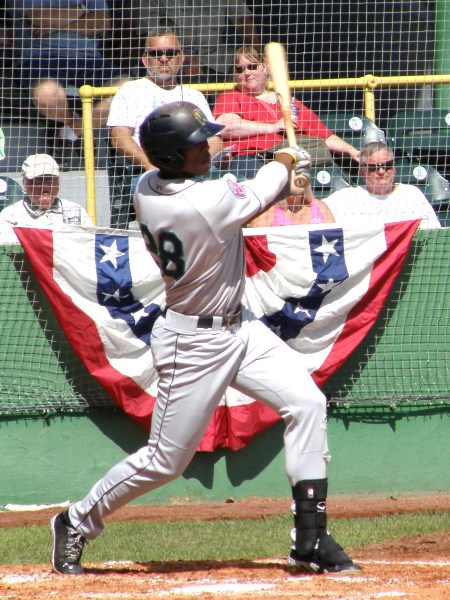
Since their permanent home, Hammond Stadium, is undergoing major remodeling, the Miracle won the first two games of their best-of-five championship series with Daytona (Cubs) on Thursday and Friday in their temporary home park, JetBlue Stadium. They will need to win one of the next three games, all in Daytona, to claim the championship title.
2013 (1 coach, 13 active, 2 DL)
Gary Lucas – pitching coach
Madison Boer P
Steven Gruver P
David Hurlbut P (DL)
Tyler Jones P
Zack Jones P
Brett Lee P
Tim Shibuya P (DL)
Matt Tomshaw P
Tyler Grimes C/IF
Jairo Rodriguez C
Niko Goodrum IF
Dalton Hicks IF
Travis Harrison OF
Max Kepler OF
Adam Brett Walker II OF
2014 (6 active, 1 DL)
Nick Burdi P
Ethan Mildren P
Alex Muren P (DL)
Brandon Peterson P
Todd Van Steensel P
Bryan Haar IF
Jason Kanzler OF
BOTH 2013 and 2014:
Jeremias Pineda OF
Episode 97: The Future of the Twins
You can download the new Talk to Contact (@TalkToContact) episode via iTunes or by clicking here, and if you want to add the show to your non-iTunes podcast player, this is the RSS Feed.
You can follow Cody on Twitter (@NoDakTwinsFan) or read his writing at NoDakTwinsFan, and you can find Eric on Twitter (@ERolfPleiss) and read his writing at Knuckleballs, and you can find Jay Corn on twitter @Jay__Corn! If you enjoy our podcast, please take a couple extra minutes and rate and review us on iTunes. Ratings and reviews are the new Ice Bucket Challenge, tell your friends and GET A BUCKET!


